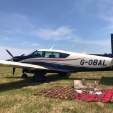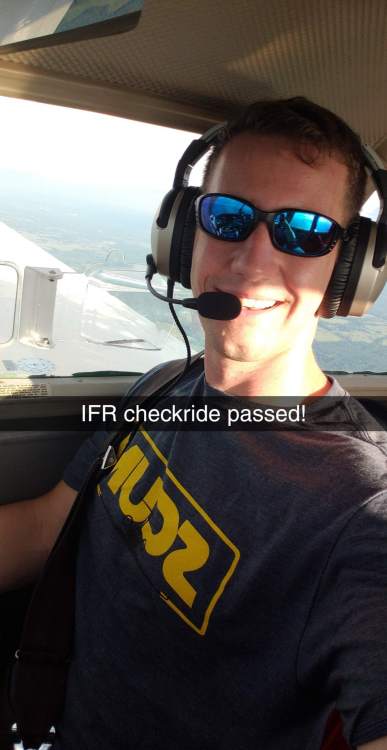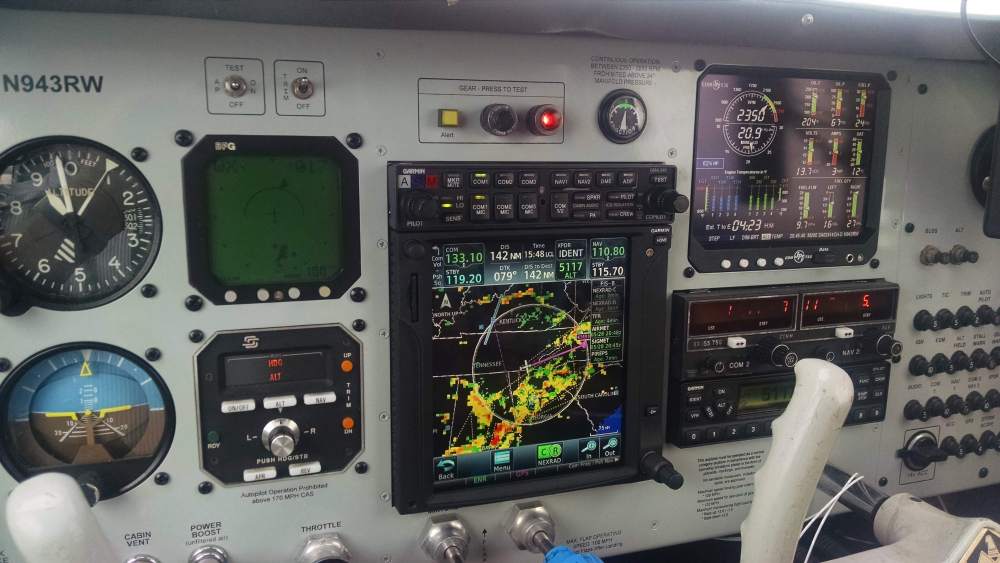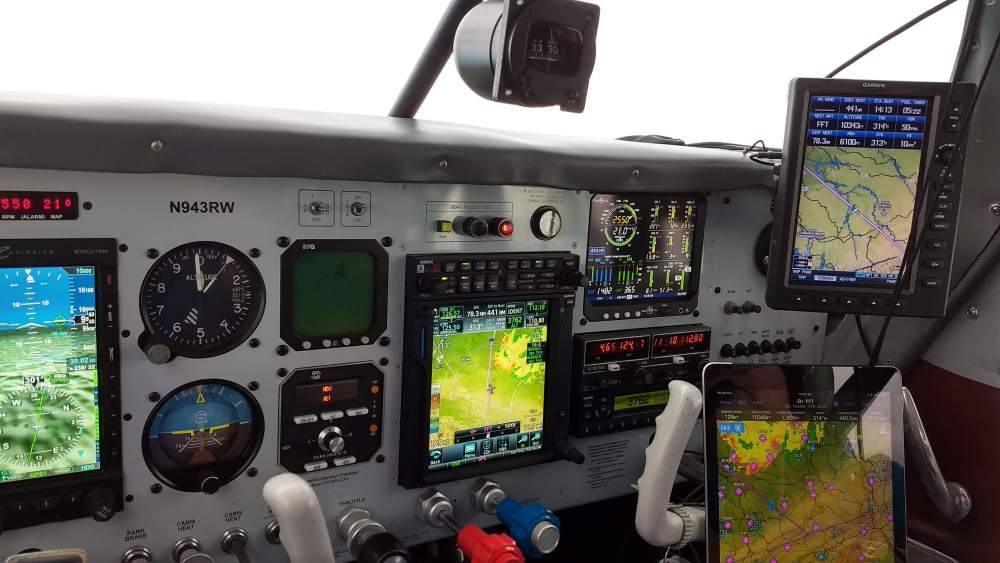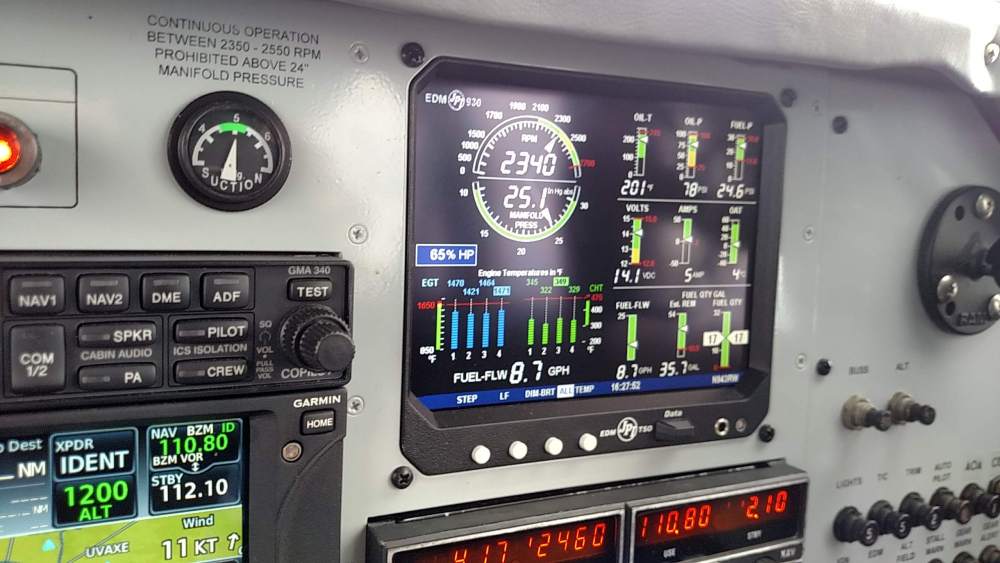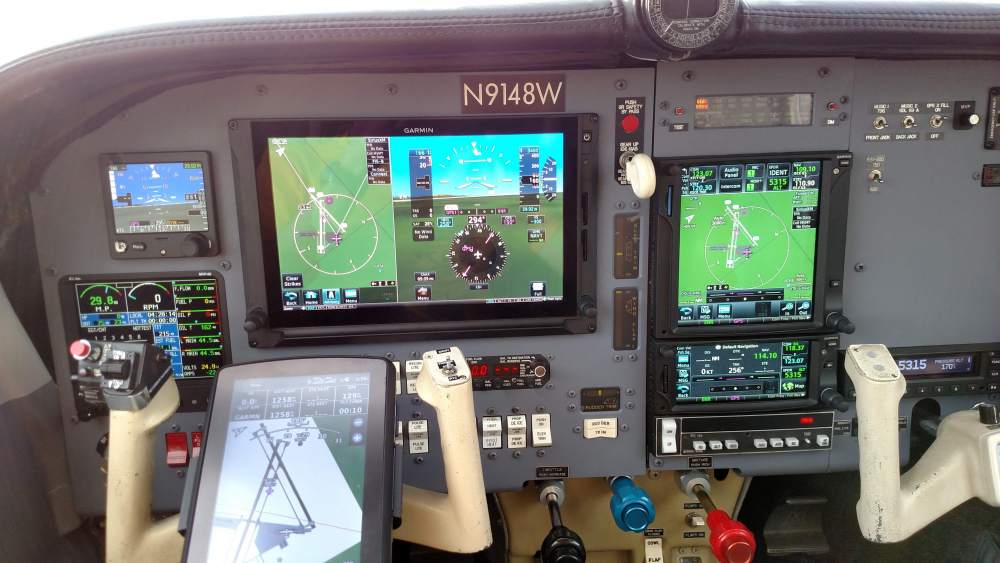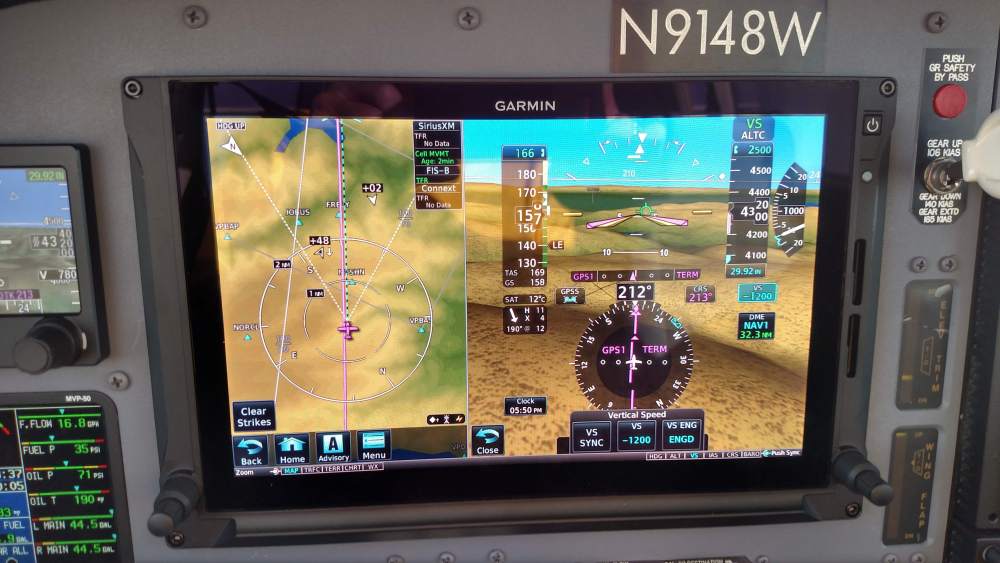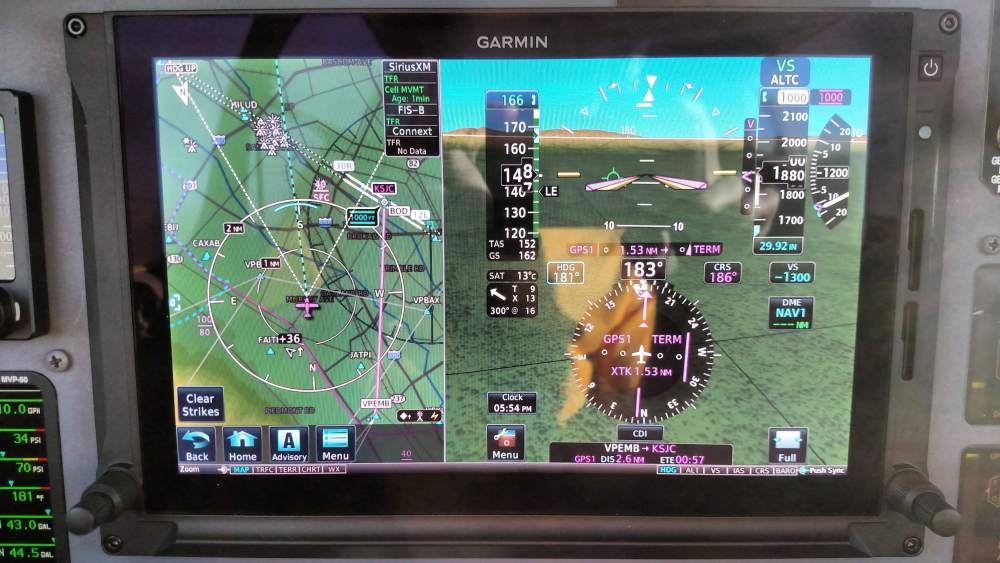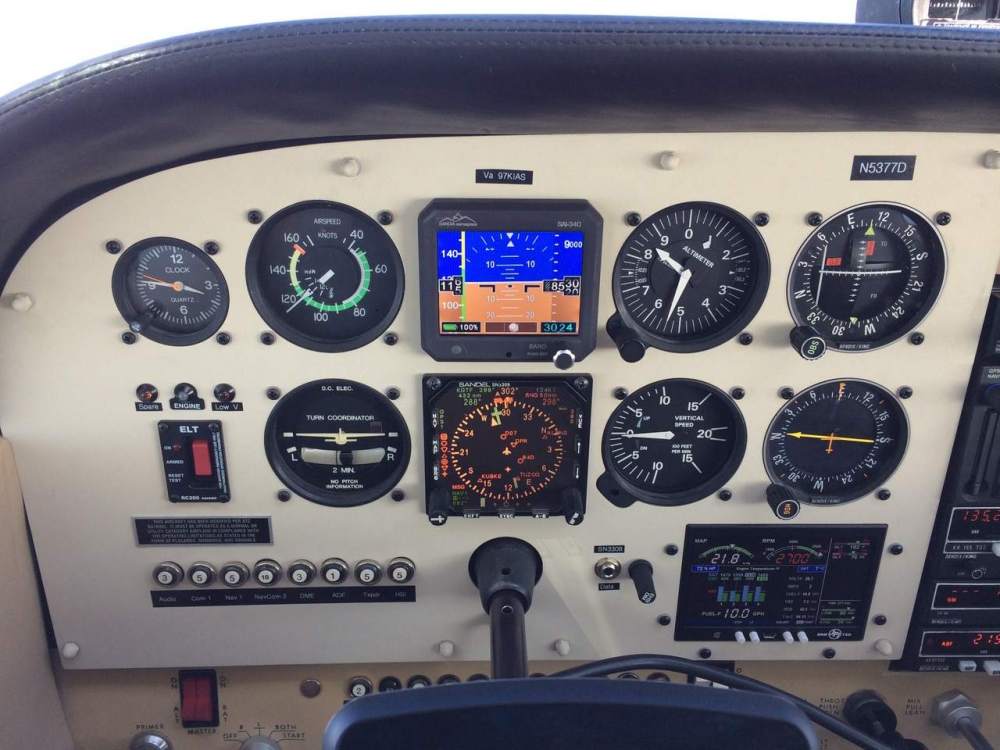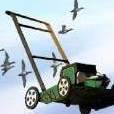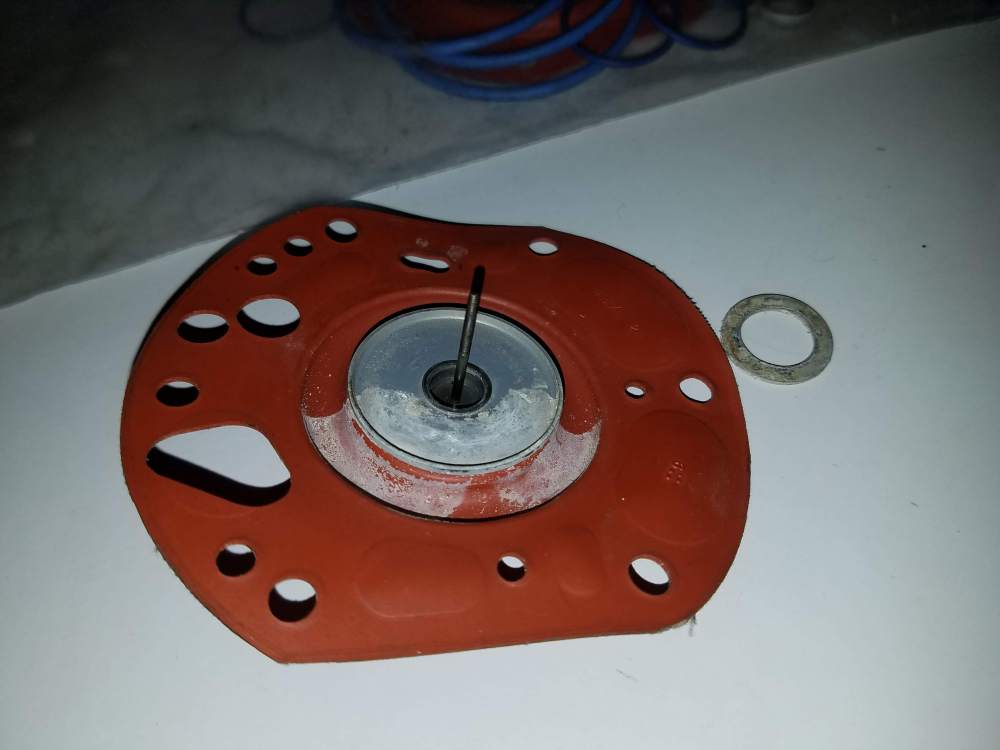Leaderboard
Popular Content
Showing content with the highest reputation on 09/15/2018 in all areas
-
3 points
-
3 points
-
Ask them how they lean out the fuel servo, since it is not adjustable on the Bendix RSA-5. And how air in the fuel line can make the gauge read higher than a solid column of fuel. Seriously, im a little concerned about the intelligence of who is working on your plane.3 points
-
3 points
-
Paul, I suppose it depends upon where you fly. As I have recounted before, I used to do a NC to So. FL round trip every few weeks for several years. Often there was a line of convective running E/W across the route from Savannah to Jacksonville. Even while trying to stay clear of clouds it is necessary to know which buildups have to be avoided. And since there is another line of clouds behind the one you're looking at it is necessary to know what's behind what you can see in order to pick the best path. Been there, done that, for me a stormscope is like my 50 year old AX card... I don't leave home w/o it. Usually there would be a 50 mile stretch where I was zooming the SS range from 100 miles to 50 or 25 and hitting the clear button about every 60 seconds - old info is worthless, NEXRAD is just about useless for picking a path through weather. OTOH, I've flown through "red" ADS-B weather on the 750 with confidence if the stormscope was quiet. When ATC asks about your ride you know he's seeing the same heavy rain that's painted on the 750. I'm smiling and reporting: "smooth ride in heavy precip".)2 points
-
Well, I will offer the alternative consideration. Again, with pics. The size of the 930 is such that it can be placed on the right side, above the copilot yoke and be both visible and easily reached. My preference is to reserve the left panel for the aviate/navigate/even communicate priorities. Engine management is none of those activities. (The JPI RAD above the Aspen displays the RPM and MAP as well as alarms.)2 points
-
Short of having on board radar, I'm a big fan of "sferics". When dealing with thunderstorms, there is no acceptable delay interval. XM/ADS-B weather is great for planning, but in the heat of the battle you need to know what'sout there now. Keep a stormscope, or get a radar. L-3's repair pricing is pretty awful. It is one of the factors steering me away from the L-3 Lynx ADS-B solution.2 points
-
I cringe when I hear someone say, "chop the power". Airplanes in non aerobatic flight should be flown gently--with grace. Make your passengers WANT to fly with you again, not run away from you. If your speed was correct on final then the power should be "WITHDRAWN" at the same rate that you raise the nose in the flare. Never EVER, EVER push the nose forward to keep the nose on the ground after landing. This will lead to a porpoise and potential prop strike. At the time you cross the threshold your landing distance has already been determined, so it's a good idea to have the crossing speed correct. Trying to force the airplane to land when it doesn't want to is folly and a good way to hurt both yourself and your airplane. As Wayne Fisher once said, "Remember, we make good landings when we want to fly and the airplane wants to land, and we make bad landings when we want to land and the airplane wants to fly!" http://www.donkaye.com/donkaye.com/Wayne_Fisher_on_Landings.html http://www.donkaye.com/donkaye.com/Perfect_Your_Landings.html2 points
-
Not sure about rider projections but they were originally saying it would be a 2:40 trip (it's about a 6 hour drive) from San Francisco to LA and if everything was completed on schedule it would have services beginning in 2029. They are starting with the "easy" section in hopes that if they build it and sink enough money into it that future governors won't abandon the project because they are already in too deep. Then they are hoping that fares from riders using that first segment (middle of nowhere) will provide funds to complete it to someplace actually useful. Sounds like a sound business plan to me... (Meanwhile you can fly commercial LAX to SFO for about $100.) Here's a couple articles if you feel like reading. One from the Orange County Register and one from the San Francisco Chronicle this year. I think this quote sums it up. "We’re ten years into the wasteful and impractical effort to build a bullet train from San Francisco to Los Angeles, and the first 119-mile segment — the “easy” segment — is already 77 percent over budget." https://www.ocregister.com/2018/04/03/what-the-bullet-train-boondoggle-can-tell-us-about-the-delta-tunnels/ https://www.sfchronicle.com/news/article/Is-California-high-speed-rail-still-a-train-to-12757303.php2 points
-
Flying the infamous left door [emoji376] Mooney. Sent from my iPhone using Tapatalk Pro2 points
-
2 points
-
In reading the manual for the latest update to the G500 TXi I came across something that hasn't been promoted, something that I had wished Garmin would add but I had never asked about it. They now give an option for an Arc VSI. I rushed over to my Avionics shop today (the change is not user selectable) and had them change the setting. The result is shown in the pictures. One of the pictures is without VNAV and the other shows the VNAV descent into San Jose. The large descent rate required was due to the East Bay Hills. The VNAV on vertical Glideslope indicator and VNAV required rate are clearly shown. I set up the VNAV to arrive at SJC at 1,000 feet MSL. I also had the chance to try out the CDI Preview. It is really slick. I ran the full ILS Approach into Stockton with the holding pattern in lieu of a PT. All was done in GPSS mode until established on final. The preview of the ILS showed up on both the CDI and the Glideslope indicator in gray while the active GPSS had the standard color. Leave it to Garmin to come up with another really great update for both the G500 and GTNs. I'm still learning how to most effectively use the new VNAV.1 point
-
1 point
-
I fly 83 nm to Spruce and buy 2 cases, 2 filters and whatever odds & ends I need. My fuel cost is about equal to the shipping charge.1 point
-
JPI allows you to turn on pre-alarms, the EGT pre-alarms are 1550, the regular alarm is 1650. So that’s just indicating #4 is approaching peak EGT as I was in a descent.1 point
-
Maybe a bit of heresy here... First of all, I find that the instrument I use the most when I'm flying... is the engine monitor. I fly most flights over an hour or several hours and usually let the autopilot fly the plane. But I'm constantly monitoring the engine and making sure I'm getting the best performance/efficiency/etc out of my engine. Since I'm so proactive with the engine monitor, I like to have it on the left side and in my line of view. Secondly I don't see the ROI of having a backup VOR head. I have so many GPS options in the cockpit that in the unlikely event the Aspen goes dark, I've got a secondary AI which is the most important backup. Navigation can be provided by any of the GPS's in the cockpit. And in the very unlikely event that I have to shoot an approach without the Aspen, autopilot, etc. and can't divert to someplace with better weather, the nav sources such as the panel mounted GPS, IFD540, my iPad with ForeFlight, etc. will be more than enough to get me down. In fact, I'd probably do that instead of using the backup VOR head, even if I had it. It just seems like such an unlikely event, and the VOR head would be my third or forth backup option... not the first or even second. Therefore there's not enough ROI to give it space in the panel.1 point
-
I had to hold for the wx on the coast to to come up once upon a time. I pulled my C back to 17"/1900 RPM and was burning right about 5 gph. Totalizer showed 8+30 hours to empty. 8+30.... that's security.1 point
-
Welcome to the CB club! Luckily a membership spot recently opened when the (former) member said that $14k was "pretty reasonable".1 point
-
Not sure of your long term plans, I would leave a CDI in the panel, add a second Aspen or install a standby AI/HSI that has Nav capabilities. Regardless which way you go with the standby CDI, I find it is an important backup if I am flying an approach. I’m with TJ and others who say they want the engine monitor in the field of view. IMHO it is the most important tool in a single engine plane. I have the idiot light for the JPI in my plane but I find I look at the JPI on a regular basis for everything from engine status to fuel estimates (like fuel to destination, etc.) to setting the power. A primary engine analyzer is an integral part of plane management and I wouldn’t want it sitting off to the side. Sent from my iPhone using Tapatalk Pro1 point
-
Here's a Mooney panel that I have been experimenting with. The off-centre HSI in the standard Mooney layout hurts my OCD, much prefer the aligned look. Allows a bit more space between instruments (required for flush mounting G5 etc.) Also attached is a C172 panel I did recently. I was concerned that the EDM900 would be a bit low, but after flying to KOSH and back, I can assure you it is fine. Next row up would be better. I would not install an EDM900 on the far side, go for an EDM930 then. And I second the opinion that you need to keep a second ILS (or VOR indicator). Need something in case the aspen goes dark. I'd be happy to work with you on developing a layout, and of course supplying an EDM900. Aerodon1 point
-
You might want to take a picture of the 901 labeling, I think they’re configured internally by the factory for different HSI/DG or GPS modes.1 point
-
I would leave 1, just in case the Aspen fails, I did what you thinking about: Removed all legacy instruments top and right side.1 point
-
The E's engine is undoubtedly a more advanced engine than the C's lowly O-360. LOP is just one of its advantages, 20 more hp is another. However the O-360 is a much easier starting engine and it is cheaper to maintain/repair and replace. A properly adjusted O-360 with fine wire plugs can be run about as miserly as an E's engine.1 point
-
I had the same engine out experience on take off on my 1982 M20J. It was caused by undrained water due to a clogged bottom drain holes on the fuel drain adapter plate. As the plane accelerates the undrained water is displaced toward the back fuel pick up location causing the engine to ingest water. The only way to drain all the water is to remove the drain valve. No matter how much run up testing you will not experience the symptoms until the plane accelerates. I replaced the drain valves for the F-391-72 which has the drain holes directly exposed to the tank and are not subject to debris clogging. No problem since. José1 point
-
1 point
-
In the future, please copy it from Word and paste into the text block somthat we don't have to downkoad it, read it then erase it . . . But good report, thanks!1 point
-
1 point
-
Not a good or bad comment, but it's Interesting that with - guessing 100k of panel work - you still find a portable useful on your yoke. To me that says Garmin has really missed something .1 point
-
Thats too bad about your experience with JPI. I am a dealer for them and was a customer before that and have had good interactions with them. If you would like to stick with JPI let me know via PM what your issues are and what product your are trying to order, I may even be able to get you a better price. As for EI I think they make a great product (I hope to be a EI dealer soon) as well and Oregon87 offers great info on the forum. As others have said they both have their strengths but for me it comes down to panel real estate and which brand fits better in my application. Our shop has installed both JPI & EI and I have EI & JPI instruments in my personal Mooney, I have truly found that both companies make a great product and you would NOT be shooting yourself in the foot either way.1 point
-
What it really means is the recently added ICA's added at the request of the FAA on maintenance manuals Do Not retroactively apply to airframes manufactured prior to publishing the ICA. They are optional for part 91 just like all SB and Sal's. You can thank Mike Busch and Paul New of Savvy Aviation for this change since they challenged the FAA on this change and the FAA agreed. It was inconsistent with previous rulings by their legal counsel folks whom have always maintained that maintenance manuals produced at the time of manufacture are the only ones legally binding to prevent airframe manufacturers from retroactively making burdensome changes. Thus we are back too the state that the only legal way to make retroactive changes for required maintenance practices and procedures is though the AD process approved by the FAA. Of course that said, every owner should review every ICA instruction, just like every SB and SL, and decide for themselves if they want to comply. Most of us will want to comply with most of them, just as most of us will want to follow the most recent maintenance manual. Sent from my iPhone using Tapatalk1 point
-
1 point
-
1 point
-
“When you start your piston engine your troubles begin. Once you have started your turbine engine your troubles are over.”1 point
-
1 point
-
Me, too. Nose wheel down, flaps up; no brakes until 50 mph or less.1 point
-
The secret to a good landing is to LET it float... as long as it wants to float. If it want's another 100', try to get it to float 200. The time to shorten the floating distance is before you get over the runway. Once crossing the numbers, the best option is to keep it floating as long as you can. You'll have the smoothest landings ever.1 point
-
I did the opposite. Pulled my 300XL and installed a GTN650 in a low-value bird. Already had the good indicator which saved thousands by itself. Also installed a Lynx-9000. Project cost was in the mid 20’s. I caution you to not solely consider the raw value of your aircraft prior to making an avionics decision. I assure you that there are many aluminum turds flying around with 70-90% of the value just in the avionics. Buy the equipment to serve your mission. I overbought but it’s already saved my ass a few times even as a vfr driver. A/C Owners are somewhat similar to the young punks that overspend on their car-audio equipment. We both own vehicles that by themself are worth market scrap price but the radio equipment is worth a fortune. Sent from my iPhone using Tapatalk1 point
-
1 point
-
You want to hold the nose wheel off. It will set down and stay. When it bounces, it is usually too much speed and the pilot wanting to put the nose down. Sent from my iPhone using Tapatalk Pro1 point
-
1 point
-
A friend gave up GA and started flying RC. He said the costs were about the same.1 point
-
A lot depends on how you think you will use the plane. Just because you have an instrument rating doesn't mean you will feel comfortable flying approaches to minimums. For example, I've been instrument rated for 41 years and I won't fly unless my destination is at least 200' and 1/2 mile better than minimums for the expected approach AND I have a good alternate with weather that is WELL above minimums. Many pilots only use their instrument ticket to punch up through a fairly low (1000'?) overcast to get on top and on the way to their destination. Or to do the same thing on the other end. That still makes the ticket useful, but does not necessarily require the latest and greatest avionics. You might wait until you both have your tickets and see how you feel about flying in the weather. If you think you'll want to fly to destinations with weather bad enough that the LPV vs. the LNAV approach would make the difference, then spend the money and get the WAAS equipment. On the other hand, if you think you'll mostly use it to get up and down through that 1000' or 2000' overcast, you probably don't need that fancy equipment. Best of luck, Bob1 point
-
My experience with Shower of Sparks. 1) if your battery is weak your Shower of Sparks (SOS) will be weak and may not provide enough spark to start 2) If you release the starter while engine is spinning this will allow the mags to do their thing and thus probable the engine will start -- The (SOS) system shorts out the mags, which is problematic with both a weak battery and the SOS not working. 3) It is my belief that if the SOS is buzzing it is working, albeit with a weak battery may not be producing sufficient spark to start. 4) If the spark plugs have too much resistance, as in old or partially fouled, they could also cause a need for more electric pulse than the SOS is providing. 5) there is a set of points within the SOS that sometimes need cleaned/filed -- SOS manual referenced above does give the point gap setting. Just a PPL so the above is not gospel but just my experience/opinions, but number 1 above causes all kinds of problems with the SOS. Good luck1 point
-
1 point
-
I would re-check the timing on the retard breaker mag. How is your mag drop?1 point
-
1 point
-
@base698, I got you beat at 68K after purchasing the plane for 52K. I flew it for a handful of hours in two years and it has been down the rest of the time. I just got it fired up last night after an extensive upgrade. My goal was to be debt free and keep costs controlled. What I have learned is that when you own a plane you are all in and cost has no ceiling. Education is expensive and I thought after having two different mechanics do a pre-buy I was in the clear. What turned out was a lot of things they didn't see in a pre-buy but an annual should have caught. My advise is skip the pre-buys its a joke. Pay for an annual and take the plane apart look and ask questions. Owning will never be cheaper or cost effective but if you want to sit in the pilots seat it and say you own it then be prepared for the outlay of money.1 point
-
Matching the spinner, Cowl, and windshield... Increased everyone’s knowledge regarding the 60’s designed guppy mouth cowl. Bettered the understanding of improvements found with simple cowl closures. Reduced drag... reduced air back-flow out the front of the cowl... improved manifold air handling... improved temperature control... modernized airflow with oil cooler relocation... (for some) renewed air seals that were leaky... Streamlined airflow, both inside and out.... Obvious streamlined exterior airflow around the cowl. improved downward air handling into the cylinder fins. updated air handling into the engine intake. updated air flow through the oil cooler added an LED landing light with a more aerodynamic lens cover in front? minimizes eddy currents that typically occur in front of the vertical windshield and flat, sunken light... maximized cool factor... Increased uniqueness... Looks pilot perfect in red... These are Some things a pilot may see while reading about this fancy cowl... stuff one can compare to in the newer versions of a Mooney... improvements that are available today, without spending an additional 150amu to get them.... Way to go Sabremech! Best regards, -a-1 point
-
Spray it down with Tri-Flo. Work it up and down and wipe it off. Repeat until it is clean. The last step is to wipe as much of the lube off as you can.1 point


